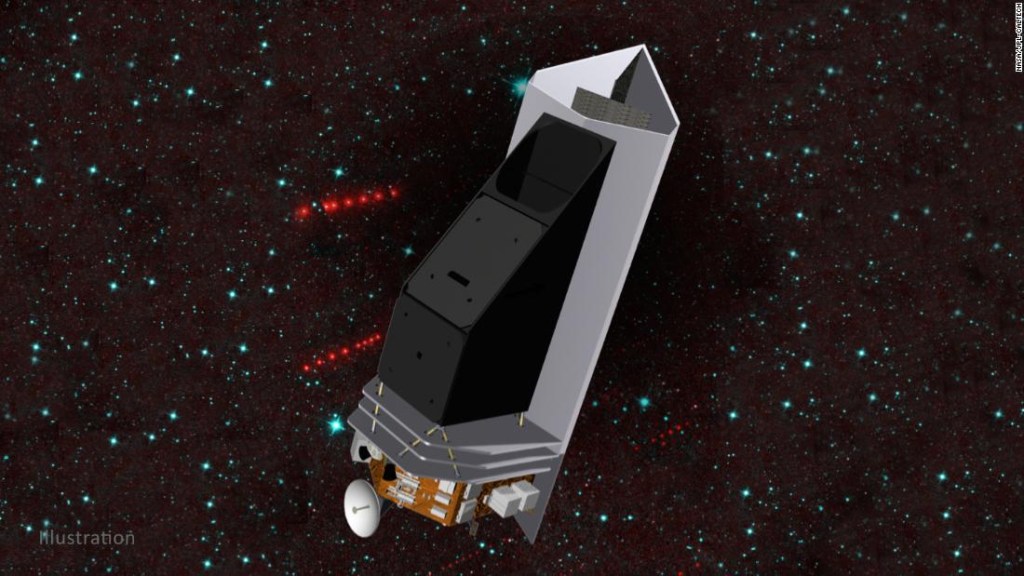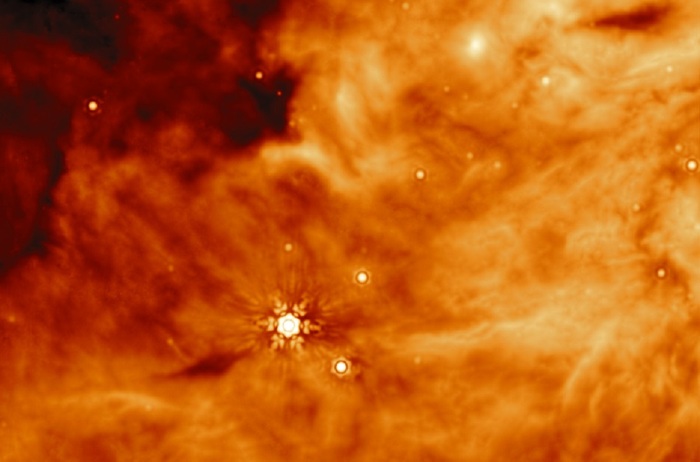NASA develops telescope to detect asteroids 0:59
(CNN) -
A new space telescope that could detect potentially dangerous asteroids and comets heading for Earth is one step closer to becoming a reality. The Near-Earth Object Surveyor space telescope, or NEO Surveyor, got NASA approval. to move on to the design phase.
The 20-foot-long infrared telescope would bolster the planetary defense by helping astronomers find asteroids and comets that come within 30 million miles of Earth's orbit.
The launch of the mission is currently scheduled for the first half of 2026.
«NEO Surveyor will have the ability to rapidly accelerate the rate at which NASA is able to discover asteroids and comets that could pose a danger to Earth, and is being designed to discover 90% of asteroids 140 meters in size or larger in a decade since its launch, ”Mike Kelley, a NEO Surveyor program scientist at NASA Headquarters, said in a statement.
In 2010, NASA completed its goal of discovering 90% of all near-Earth objects greater than 1,000 meters.
The agency was then ordered by the National Aeronautics and Space Administration Act of 2005 to find 90% of near-Earth objects over 140 meters.
To date, NASA has found 40% of the objects within this range.
This is the last postcard of the asteroid Bennu 0:51
"Every night astronomers around the world diligently use ground-based optical telescopes to discover new near-Earth objects, recognize their shape and size, and confirm that they pose no threat to us," said Kelly Fast, director of the observing program. Near-Earth Objects from NASA, in a statement.
advertising
'These telescopes are only capable of searching for near-Earth objects (NEOs) in the night sky.
NEO Surveyor would allow day and night observations to continue, specifically targeting regions where NEOs could be found that could pose a hazard and accelerating progress toward the congressional goal. "
This illustration shows NEO Surveyor, a new mission that could uncover most of the potentially dangerous asteroids found near Earth.
The ability to discover and characterize potentially dangerous NEOs also allows astronomers to track these objects.
At present, there are no known NEO impact threats for the next century.
However, unknown near-Earth objects can cause unforeseen impacts, such as the one at Chelyabinsk in Russia.
What does NASA do to avoid an asteroid impact?
In 2013, an asteroid entered Earth's atmosphere over Chelyabinsk, Russia.
It exploded in midair, releasing between 20 and 30 times more energy than that of the first atomic bombs, generating a brightness greater than that of the sun, exuding heat, damaging more than 7,000 buildings and injuring more than 1,000 people.
The shock wave smashed windows 93 kilometers away.
It went unnoticed because the asteroid was coming in the same direction and trajectory as the sun.
Five things you should know about the meteorite that hit Russia and the asteroid
The NEO Surveyor will use infrared sensors that can help astronomers find these objects, even those that may approach Earth during the day from the direction of the sun.
This is not possible using ground-based observatories.
"By searching for objects close to the sun's direction, NEO Surveyor would help astronomers discover impact hazards that could approach Earth from the daytime sky," said Amy Mainzer, NEO Surveyor principal investigator at the University of Arizona and professor at the Lunar and Planetary Laboratory at the University of Arizona, in a statement.
"We think there are about 25,000 near-Earth objects large enough to wipe out an area like Southern California," Mainzer said.
“Once they exceed 137 meters in diameter, they can cause serious regional damage.
We want to find these, and all the smallest possible.
The NEO Surveyor can search for asteroids by detecting the heat they emit in infrared light.
This information can help astronomers detect the position, motion, and size of near-Earth objects.
The telescope will follow an orbit that will take it away from the Moon.
This position will allow you to scan the sky and focus on areas near the sun where asteroids with orbits that bring them closer to Earth may be found.
Europe begins asteroid defense mission 1:16
"Asteroids and comets approaching Earth are heated by the sun and give off an amount of heat that the NEO Surveyor mission will be able to capture," Mainzer explains.
Even asteroids as dark as a lump of coal will not be able to hide from our infrared eyes.
With NEO Surveyor, we want to detect potentially dangerous NEOs when they are years or decades away from potential impact. "
"The idea is to allow as much time as possible to develop mitigation efforts that allow us to get them out of the way."
Deflect asteroids
If there is enough warning time, near-Earth objects could be deflected.
Later this year, NASA will put its asteroid deflection technology to the test to see how it influences the motion of a near-Earth asteroid in space with DART, or the Double Asteroid Redirection Test mission.
Two decades ago, a binary system made up of a near-Earth asteroid was discovered to have a moon in its orbit, named Didymos.
In Greek, Didymos means "twin," which was used to describe how the larger asteroid, almost 805 meters in diameter, is orbited by a smaller 160-meter-diameter moon called Dimorphos, which means "two shapes."
By the end of 2022, Didymos and Dimorphos will be relatively close to Earth and less than 11 million kilometers from our planet, the perfect time for the DART mission to take place.
NASA chooses its new protector of Earth 0:58
The DART spacecraft will deliberately collide with Dimorphos to change the asteroid's motion in space, according to NASA.
This collision will be recorded by LICIACube, a CubeSat or complementary cube satellite provided by the Italian Space Agency.
The CubeSat will travel aboard the DART and deploy from it prior to impact in order to record what happens.
A few years after the impact, the European Space Agency's Hera mission will conduct a follow-up investigation of Didymos and Dimorphos.
This rapid impact will only change the speed of Dimorphos in its orbit around Didymos by 1%, which doesn't seem like much, but it will change its orbital period in several minutes.
That change, which is probably not negative, can be observed and measured from ground-based telescopes on Earth.
It will also be the first time that humans have measurably altered the dynamics of a body in the solar system, according to the European Space Agency.
AsteroidsNASATelescope


/cloudfront-eu-central-1.images.arcpublishing.com/prisa/TQ73US57UFGWTIXR7C3BS2OTIA.jpg)








/cloudfront-eu-central-1.images.arcpublishing.com/prisa/KMEYMJKESBAZBE4MRBAM4TGHIQ.jpg)


